Service and combat use of captured German machine guns after the end of World War II
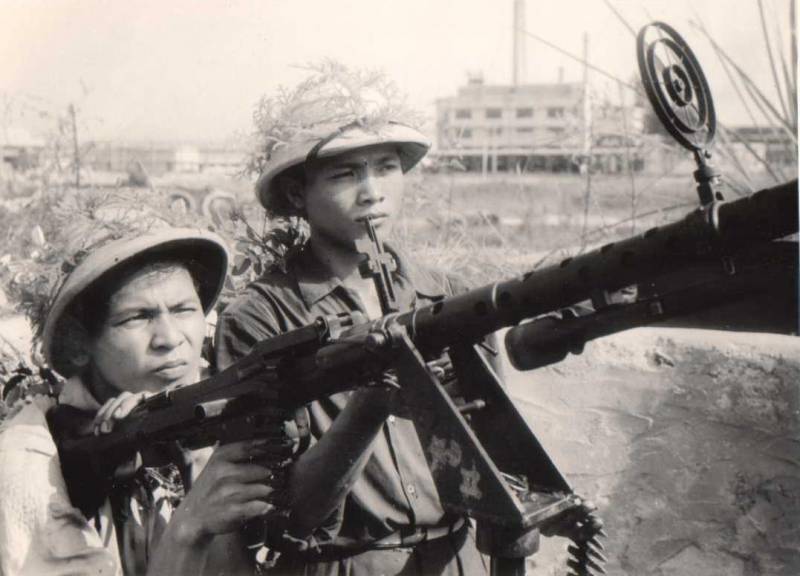
The German belt-fed machine guns MG.34 and MG.42 are in fact the first "single machine guns" that served as light and heavy machine guns, and were also mounted on armored vehicles. They were produced and actively used by the German troops until the surrender of Nazi Germany. Due to the high combat, service and operational characteristics, machine guns developed in the Third Reich were in service in the post-war period or were considered as a mobilization reserve in more than three dozen states.
In a number of countries, based on the MG.42 or using some of its design solutions, their own machine guns were created, differing from the German prototype in parts, assemblies and ammunition. German machine guns produced during World War II, as well as their post-war descendants, were actively used in many armed conflicts, and will remain in service in the coming decades.
German machine guns of World War II
Of course, the most famous German machine guns of the Second World War are the MG.34 and MG.42. However, in the armed forces of the Third Reich there were many machine guns of other types of domestic and foreign production. Trophy samples captured or purchased from other countries will remain outside the scope of this publication, and only machine guns developed in Germany will be considered.
After the end of World War I, the MG.08 and MG.08/15 machine guns remained in the German armed forces.
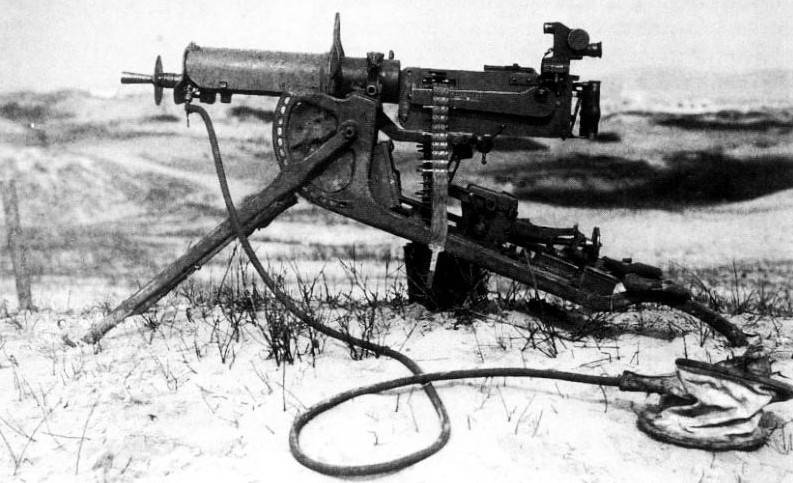
Machine gun MG.08
The MG.08 (German Maschinengewehr 08) water-cooled machine gun, adopted in 1908, was a German version of the Hiram Maxim system. The mass of the machine gun with the machine was 64 kg. Length - 1185 mm. Rate of fire - 500-600 rds / min. The initial speed of a bullet weighing 12,8 g is about 800 m / s.
Due to the excessive weight of the heavy machine gun and the need to equip small infantry units with light machine guns, two lightweight models were created based on the MG.08: MG.08/15 and MG.08/18. The MG.08/15 machine gun with a water-cooled barrel became quite popular, and the air-cooled MG.08/18 was not produced much after the end of the war.
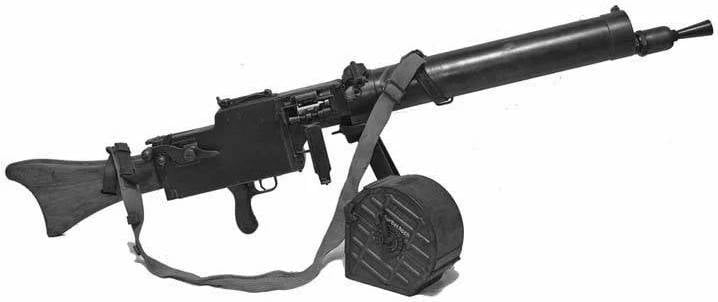
Machine gun MG.08/15
Machine gun MG.08/15 weighed 17,9 kg. Length - 1448 mm. Rate of fire 500-600 rds / min.
Although by September 1, 1939, MG.08 and MG.08 / 15 were already obsolete, there were more than 40 of these machine guns in the troops and warehouses, and they, along with other models, fought at the front.
It is clear that the use of the German "Maxims" was largely forced and due to the lack of modern machine guns. However, the MG.08 and MG.08/15 had one indisputable advantage. The reliable (albeit somewhat heavy) water-cooled design made it possible to conduct intense fire without the risk of overheating the barrel, surpassing the MG.34 and MG.42 in this respect.
Since the German machine guns left over from the Kaiser's army were too heavy, in the early 1930s, several promising infantry machine guns were created in Germany that were more in line with the ideas of the military about weapons mobile warfare. The first model adopted for service in 1931 was the MG.13 light machine gun, developed using the MG.08 automation scheme.

MG.13 light machine gun with 75 rounds magazine, stock folded
The weight of the machine gun without a magazine was 13,3 kg, length - 1340 mm. Rate of fire - up to 600 rds / min. For food, magazines for 25 and 75 rounds were used. To reduce the size of the tubular stock with a folding shoulder rest folded to the right.
The MG.13 was in many ways superior to the regular Reichswehr MG.08/15 light machine gun, but it had many drawbacks: design complexity, lengthy barrel changes, and high production costs. In addition, the military was not satisfied with the store-bought power supply system, which increased the weight of the carried ammunition and reduced the combat rate of fire, which made the machine gun ineffective during intensive firing from the machine. In this regard, relatively few MG.13 machine guns were produced, their serial production continued until the end of 1934. Nevertheless, MG.13 machine guns were exported and used in combat until the end of World War II.
In the first half of the 1930s, Rheinmetall-Borsig AG brought a universal belt-fed machine gun to the required level of reliability, which could be used as a manual machine gun when firing from a bipod, as well as an easel and anti-aircraft machine gun from a machine or a tripod.
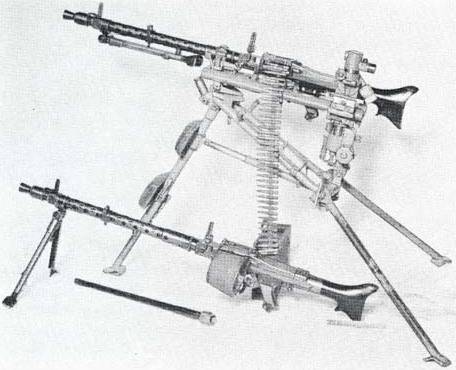
Machine guns MG.34 on bipods and on the machine
The machine gun, which received the designation MG.34, was also intended for use on armored vehicles in ball mounts and various turrets. Such unification simplified the supply and training of troops, and provided high tactical flexibility.
Automation MG.34 worked due to the recoil of the barrel with a short stroke, locking was carried out by a shutter with a rotating larva. MG.34 in a manual version without cartridges weighed a little over 12 kg and had a length of 1219 mm. The machine guns of the first series gave a rate of fire of 800-900 rds / min. However, based on combat experience, due to the use of a lower mass shutter on the MG.34 / 41 modification, the rate was increased to 1200 rds / min.
In case of overheating, the barrel could be quickly replaced. The barrel was supposed to be changed every 250-300 shots. For this, the kit included two or three spare barrels and an asbestos glove.
The machine gun mounted on the machine was loaded with a tape from a box of 150 rounds (Patronenkasten 36) or 300 rounds (Patronenkasten 34 and Patronenkasten 41). In the manual version, compact cylindrical boxes for 50 rounds (Gurttrommel 34) were used. There was also a magazine-fed option: for machine guns, the cover of the box with a tape drive mechanism was replaced by a cover with a mount for the 75-cartridge twin drum magazine Patronentrommel 34, structurally similar to the magazines of the MG.13 light machine gun and the aircraft MG.15. The store consisted of two connected drums, the cartridges of which are fed alternately. The rate of fire when powered from a drum magazine was higher, but this option did not take root among the troops. Drum magazines were not popular due to their high sensitivity to contamination and the complexity of the equipment. Most often, light machine guns were used with belt feed from a cylindrical 50-cartridge box.
Although the more advanced MG.1942 machine gun was adopted in 42, the production of the MG.34 continued until 1945.
The MG.34 machine gun was popular, but there was always a shortage of such machine guns in the troops. For all its merits, the MG.34 was complicated and expensive, which was pointed out by the specialists of the Department of Infantry Weapons of the Ordnance Department even before it was put into mass production. During the fighting on the Eastern Front, it turned out that the MG.34 is very sensitive to wear and tear of parts and the state of lubrication, and highly skilled machine gunners are required for proper maintenance.
The development of a new single machine gun was initiated shortly after the MG.34 was put into service, and in 1938 Metall-und Lackwarenfabrik Johannes Großfuß presented its own sample. Fine-tuning the design and preparation for mass production went on for several years, and after careful military tests, the machine gun was put into service in 1942 under the designation MG.42.
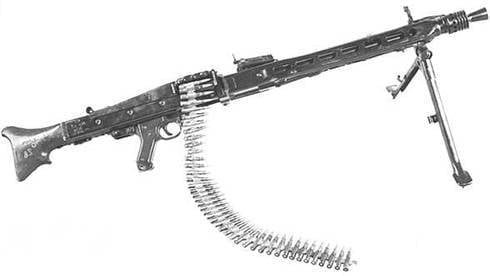
Machine gun MG.42
The MG.42 machine gun had a length of 1200 mm and was slightly lighter than the MG.34, the weight without cartridges was 11,57 kg. Depending on the weight of the shutter, the rate of fire is 1000-1500 rds / min.
The MG.42 automation functioned due to the recoil of the barrel during its short stroke, with the shutter being locked by rollers with a spread to the sides. The transition to a roller shutter from the MG.34 bolt with a rotary head made it possible to significantly increase the rate of fire without loss of reliability. As in the previous model, the problem of barrel overheating during prolonged shooting was solved by replacing it. In the production of MG.42, stamping and spot welding were widely used, which made it possible to reduce the price and labor intensity. In order to simplify the design, there was a rejection of the possibility of feeding the tape from either side, store food and the fire mode switch. Compared to the MG.34, the cost of the MG.42 has decreased by about 30%. Approximately 34 kg of metal and 49 man-hours were used to manufacture the MG.150, and 42 kg and 27,5 man-hours for the MG.75.
According to American sources, more than 570 MG.000 machine guns and more than 34 MG.420s were fired before the surrender of Germany. Allies in the anti-Hitler coalition captured at least 000 German machine guns.
Post-war use of machine guns made in Nazi Germany
In the form of trophies, Soviet troops captured at least 1500 MG.08 and MG.08 / 15 machine guns, and after the end of World War II, most of them were handed over to the Chinese Communists, who used these machine guns against the Kuomintang troops.
With the development of the transferred German machine guns in China, there were no problems; in the 1920-1930s, easel MG.08 and manual MG.08/15 were delivered to China. Since 1935, the Hanyang Arsenal, based on a set of documentation purchased in Germany, began to produce the Type 24 machine gun.
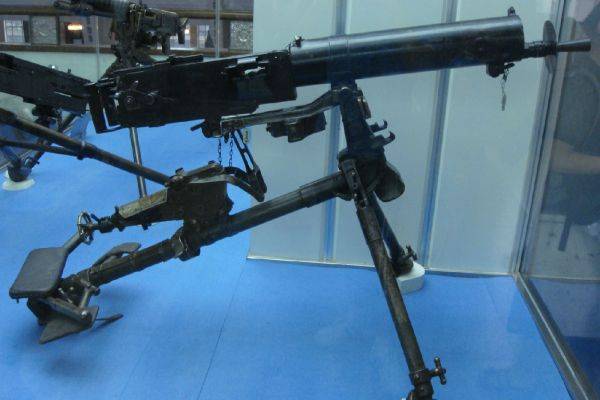
MG.08 easel machine gun at the Military Museum of the Chinese Revolution
The Chinese version of the MG.08 heavy machine gun received an anti-aircraft sight, a retractable anti-aircraft tripod with a shoulder rest, the rate of fire was increased to 650 rds / min.
After the victory of the Chinese Communists in the civil war and the flight of the government and part of the troops of Chiang Kai-shek to Taiwan, the original German machine guns and their local copies took part in the hostilities on the Korean Peninsula, and then in Southeast Asia.

MG.08 machine guns captured by the Americans in Vietnam. Photo taken in Saigon in 1969
Although in the late 1960s the German Maxims were outright antiques, such machine guns were captured by American troops from the Viet Cong.
In June 1941, Finland had more than 1000 MG.08 machine guns, and they remained in service with the Finnish army until the end of World War II, after which they were transferred to storage. In 1951, there were 620 copies in stock, which were finally written off in the early 1960s.
MG.13 light machine guns were not widely used. After the Second World War in Europe, they were in service with the armies of Spain and Portugal.
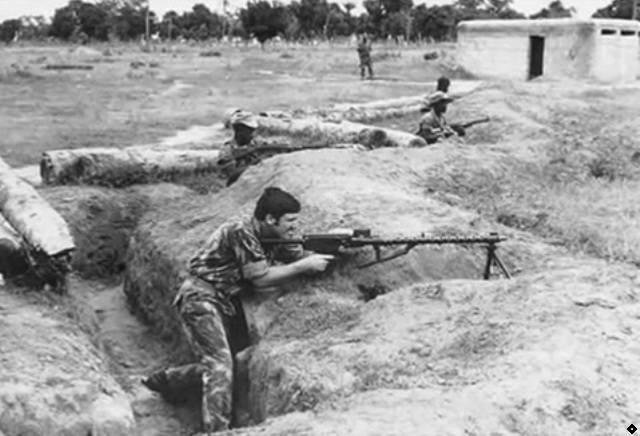
In the 1960s, the Portuguese military used the MG.13 against insurgents in Mozambique and Angola.
In the post-war period, the German MG.34 and MG.42, as well as samples created on their basis, were officially used by the armed forces of Albania, Austria, Argentina, Bulgaria, Greece, Spain, Italy, Romania, Turkey, France, Portugal, Iran, Pakistan , Czechoslovakia, Norway, Switzerland, Italy, Israel, Syria, China, Vietnam, Yugoslavia, East Germany and Germany.
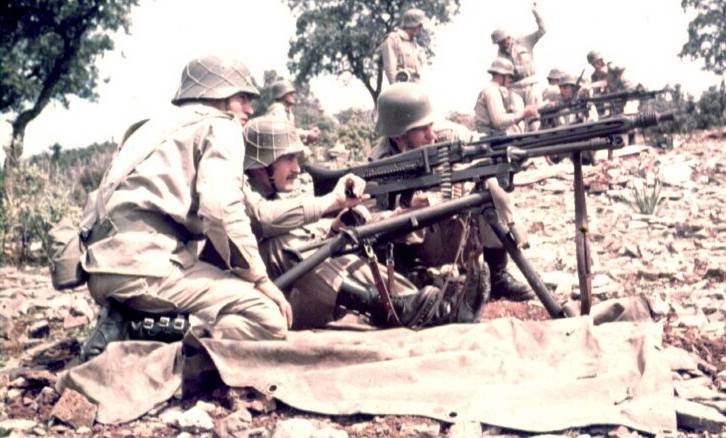
Units of the 54th Infantry Regiment of the Spanish Army during exercises in Southern Spain, 1980
In a number of states, German machine guns were listed as weapons of a limited standard for the security forces and various paramilitary groups.
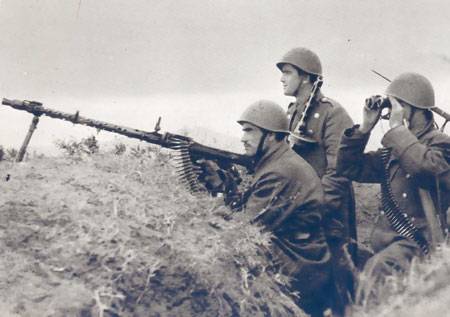
Albanian soldiers with MG.34
Often MG.34 and MG.42 could be seen in the same ranks with the Soviet AKM.
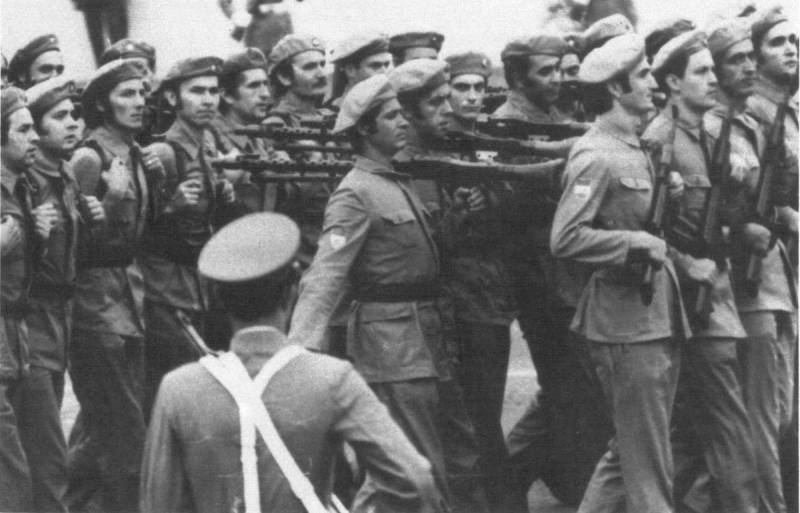
In some countries, military-issue German machine guns have been in service for several decades, and some of the machine guns have been converted to other calibers.
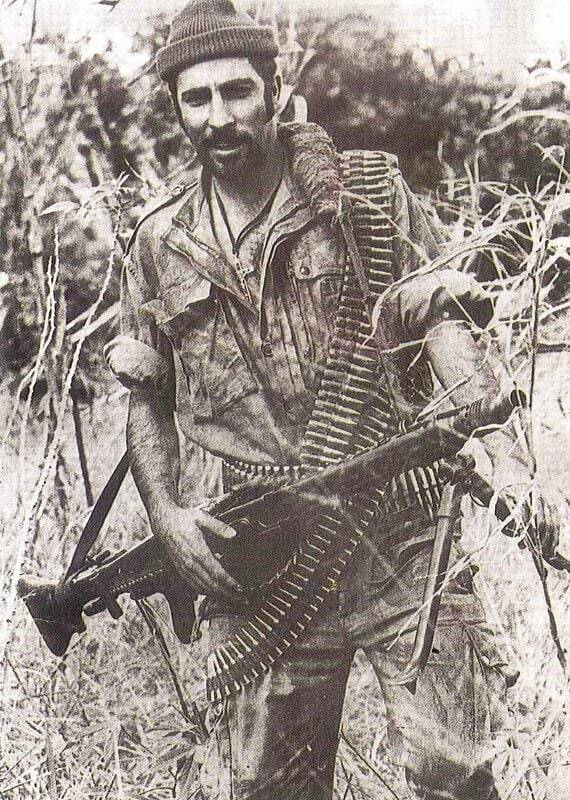
Shortly after the end of World War II, MG.34 and MG.42 again entered the battle. German machine guns were used by the warring parties in 1946-1949. during the Greek Civil War.
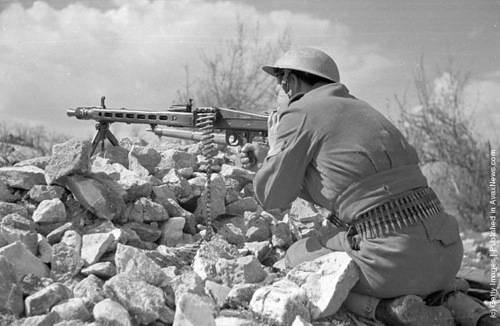
The first use of captured German machine guns in the Middle East was recorded in 1948, after Israel received from Czechoslovakia about 25 rifles and more than 000 machine guns chambered in 5000 × 7,92 Mauser. Large-scale deliveries of weapons that belonged to Germany during the Second World War allowed the Israeli armed groups in April 57 to move on to active operations.
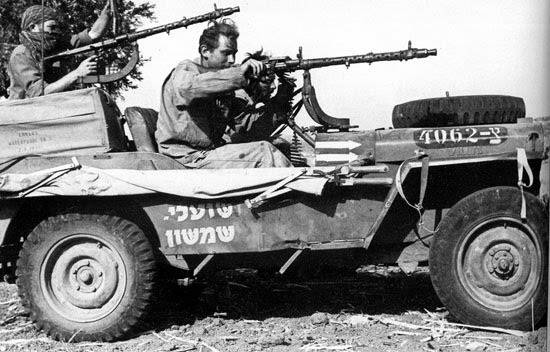
Israeli motorized cart armed with two MG.34 machine guns
The Israelis mainly used the MG.34, which in wartime was produced at the Waffenfabrik Brünn enterprise (as the Germans called the Zbrojovka Brno enterprise). By the mid-1970s, rifles and machine guns under the 7,92-mm cartridge in Israel remained only with reservists or in auxiliary units that were not directly involved in battles on the front line.
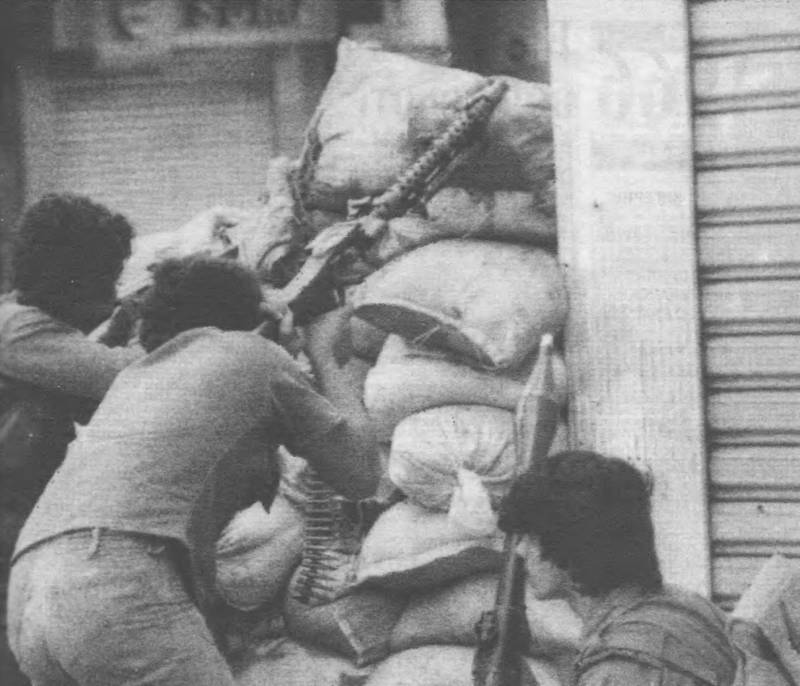
Beirut, 1975
However, in the armies of the Arab states, the MG.34 and MG.42 were used for a very long time. After the occupation of Iraq, the US military often seized German machine guns along with K98k rifles.
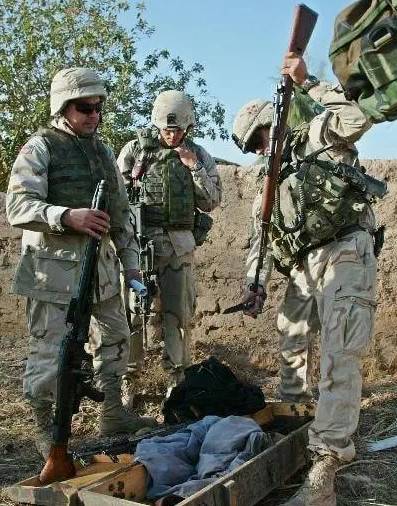
However, in part these were Iranian MG.3 chambered for 7,62 × 51 mm, captured by the Iraqis during the Iran-Iraq war.
In 2012-2014, during the civil war in Syria, warehouses with small arms were looted, and the old German machine guns were at the disposal of the Islamists.
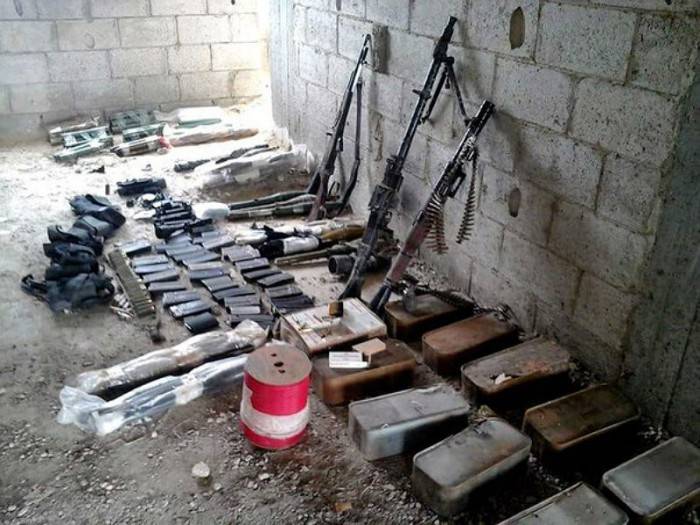
The French military and security forces used captured MG.34 and MG.42 at the initial stage of hostilities in Algiers. In large quantities, MG.34 machine guns were also available from local rebels.
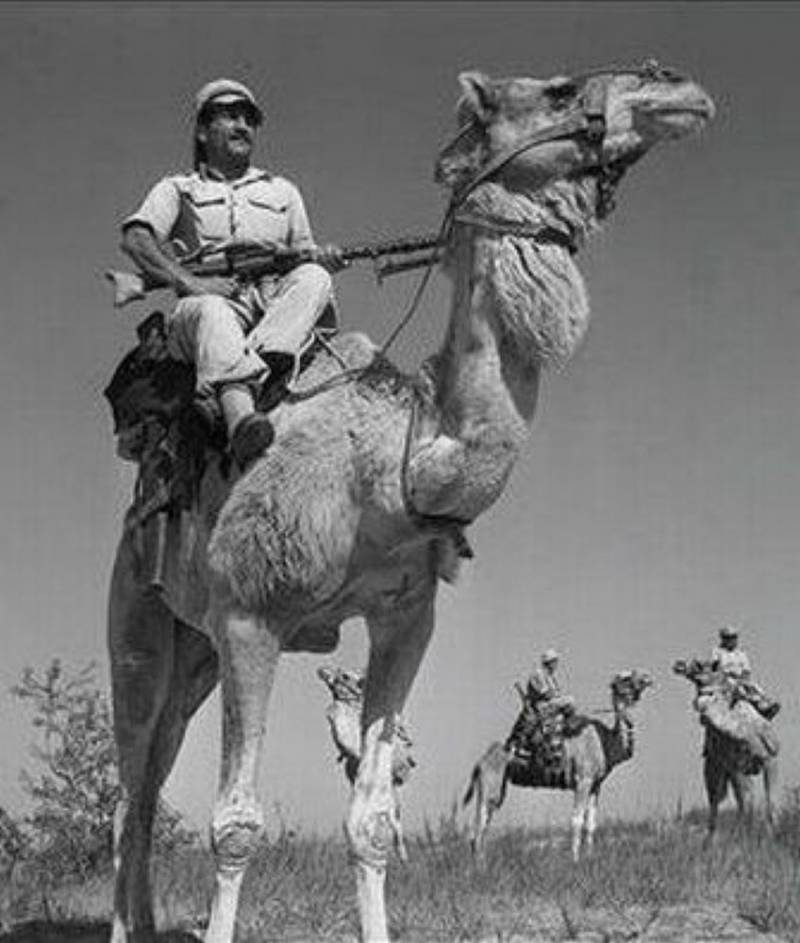
After Algeria gained independence, the MG.34s supplied by Czechoslovakia and recaptured from the French remained in service until the end of the 1970s.
There are many photographs showing German-made machine guns used by partisans in Southeast Asia in the 1960s and 1970s. As in the case of Algeria, these were mainly MG.34s.
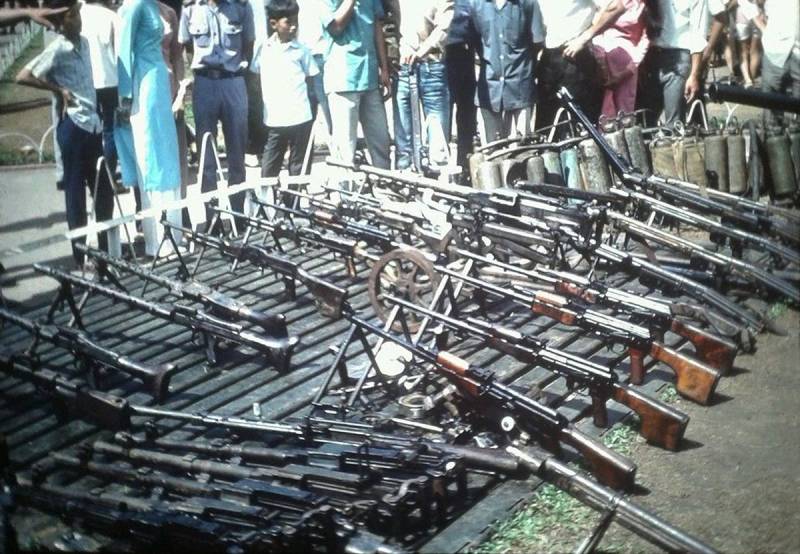
Exhibition of weapons captured by the Americans from the Viet Cong
Very often, MG.34s were used for firing at air targets, which was facilitated by a high rate of fire.
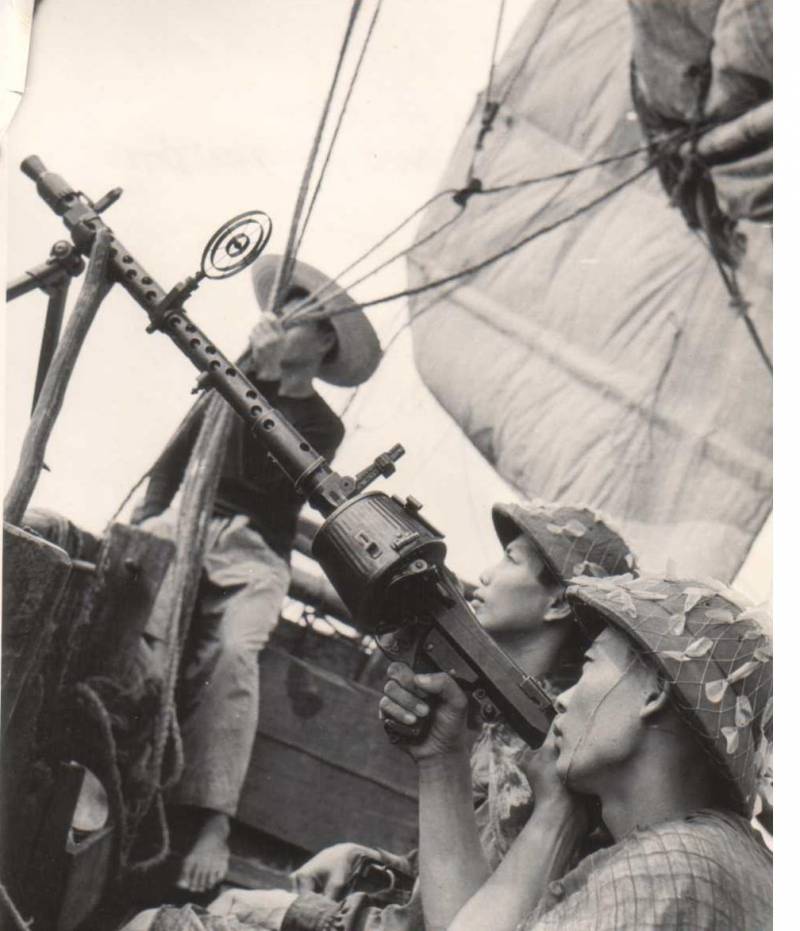
In the photographs, you can see machine guns mounted on regular German anti-aircraft tripods and on various improvised supports.
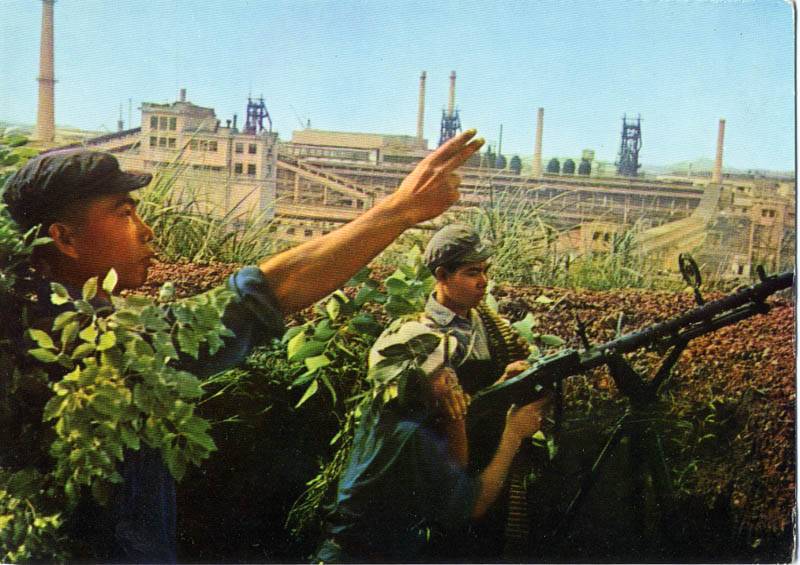
Rifle-caliber machine guns were ineffective against jet bombers, but posed a certain danger to helicopters and piston attack aircraft.
Many captured German machine guns purchased in Western Europe in the 1950s and 1960s were in Portuguese units that fought from 1962 to 1975 in Mozambique, Angola and Guinea-Bissau.
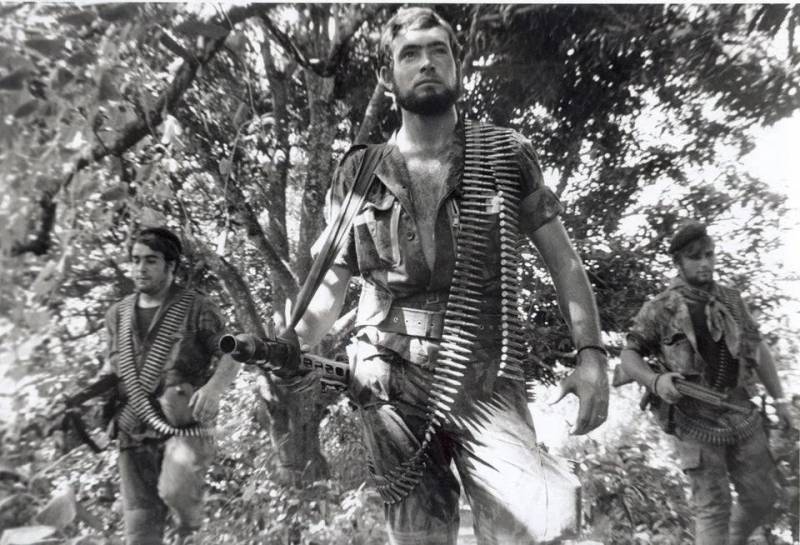
The use of MG.34 and MG.42 was facilitated by the fact that the Portuguese army had a large number of German rifles chambered for 7,92 × 57 Mauser.
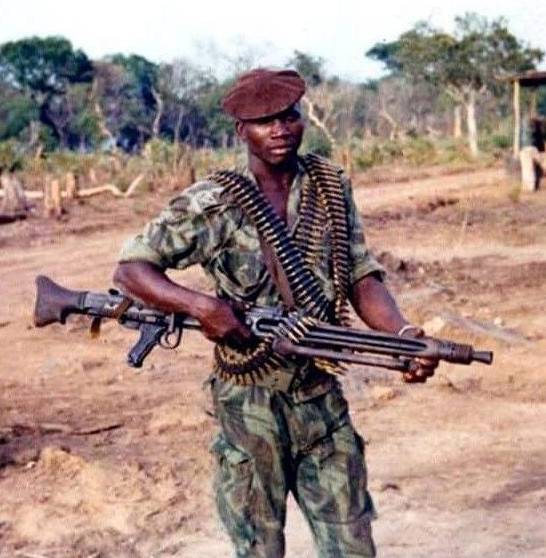
During the protracted colonial war, part of the machine guns that the Portuguese had fell into the hands of the rebels and they were subsequently used in internal disassemblies that began after the withdrawal of the Portuguese troops from Africa.
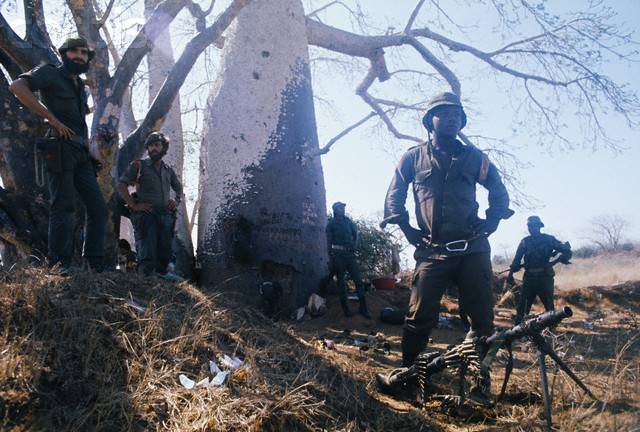
Angola, FLNA militants
In Angola, in 1975, a conflict broke out between three rival armed groups: the MPLA, FNLA and UNITA, which resulted in a long civil war, in which captured German machine guns were also used.
A significant number of German-made machine guns of 7,92 mm caliber were available in the Yugoslav army. In the early 1980s, the MG.34 and MG.42 machine guns were taken out of service and transferred to storage.
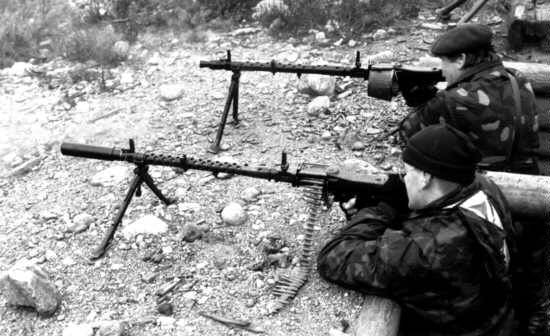
After the collapse of Yugoslavia, weapons stored in warehouses in Bosnia and Croatia ended up at the disposal of national formations and took an active part in the hostilities. In addition to the original captured German machine guns, the warring parties used Zastava M53 machine guns - Yugoslav copies of the MG.42.
In the 21st century, there were almost no German machine guns produced during the Second World War in service with regular armies.
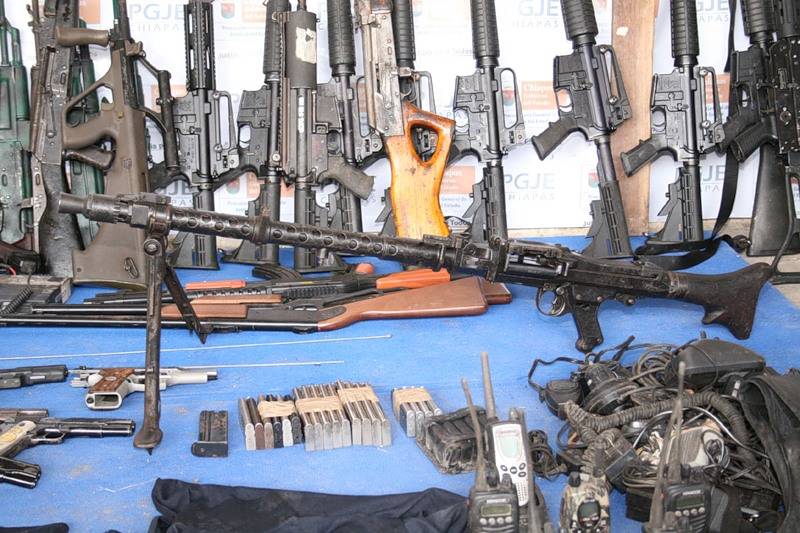
Weapons seized in Mexico from drug dealers
Nevertheless, such weapons are still quite common among various rebels, mercenaries and drug cartel militants.
Machine guns created in the post-war period based on the MG.42
After the end of World War II, the improvement of machine guns created in Nazi Germany continued. In a number of countries, on the basis of the MG.42, machine guns were designed and produced that differed from the prototype in the ammunition used and constructively.
In the early 1940s, the command of the Swiss army came to the final understanding of the need to urgently replace the obsolete machine gun MG 11 (the Swiss version of the Maxim machine gun chambered for 7,5 × 55 mm). The state arsenal of Waffenfabrik Bern, private companies SIG and Hispano-Suiza took part in the competition for the development of a single machine gun. The MG 1951 machine gun, developed on the basis of the MG.51 by the Waffenfabrik Bern arsenal, was declared the winner in 42, and the SIG company exported its MG 1950 machine gun in the 50s.

7,5 mm machine gun MG 51
Automation MG 51 is based on the recoil energy of the barrel at a short stroke. The design of the shutter and the locking unit is similar to the MG.42, but instead of the locking rollers, lugs that are spread apart are used. In addition, the design of the Swiss machine gun has a lever-operated bolt recoil accelerator.
When designing the MG 51 machine gun, the developers abandoned many stamped parts. So, a milled receiver is made from a solid steel forging. As a result, the MG 51 turned out to be much more expensive and heavier than the MG.42. On the other hand, the Swiss machine gun is considered more durable, accurate and reliable. The weight of the MG 51 machine gun without a machine is 16 kg. Length - 1270 mm, barrel length - 565 mm. Rate of fire - 1000 rds / min.
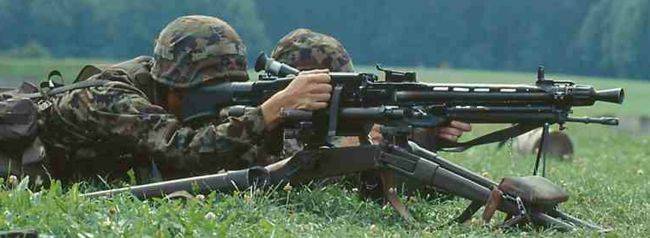
Swiss military with a 7,5 mm MG 51 machine gun mounted on a machine
Currently, the production of MG 51 machine guns has been discontinued, and they are being replaced in the infantry by 5,56-mm machine guns Leichtes Maschinengewehr 05 (FN Minimi). However, 7,5 mm machine guns are still in storage, MG 51/71 machine guns are used on armored vehicles and vehicles, and MG 51/80 machine guns are installed in pillboxes. For Swiss tanks Pz 87 "Leopard-2" a modification of the Pz MG 87 with an electric trigger was created.
In the first post-war years, captured German MG.42 machine guns were the main type of machine guns of the Yugoslav People's Army. Already 5 years after the end of World War II, the question arose of replenishing the army arsenals with new machine guns, and in 1950 the Directorate of Infantry Arms and Tactics of the General Staff instructed the Crvena Zastava enterprise to create a single 42 mm machine gun based on MG.7,92.
However, copying the MG.42 was not as easy as it seemed at first. The samples created by the Zastava enterprise at the first stage did not provide the required level of reliability, due to poor heat treatment and the use of low-quality steel, the vitality of critical parts was low. In addition, the German MG.42 and their Yugoslav counterparts did not digest well the 7,92-mm Yugoslav-made cartridges. With intense shooting, bullets often fell out and shells ruptured.
It was possible to bring the weapon up to standard after consulting with German specialists, working out the production technology and mastering the production of 7,92 × 57 mm sS Patrone cartridges, with a heavy pointed bullet weighing 12,8 g in a steel clad shell with a lead core, which had a conical tail.
In 1954, the Yugoslav enterprise "Zastava", located in the city of Kragujevac, began mass production of a copy of the MG.42 adapted to local production facilities, adopted by the JNA under the designation Puskomitraljez 7,9 mm M.53. Much more this machine gun is known as the Zastava M53. According to its main characteristics, the Yugoslav copy corresponds to the German prototype.
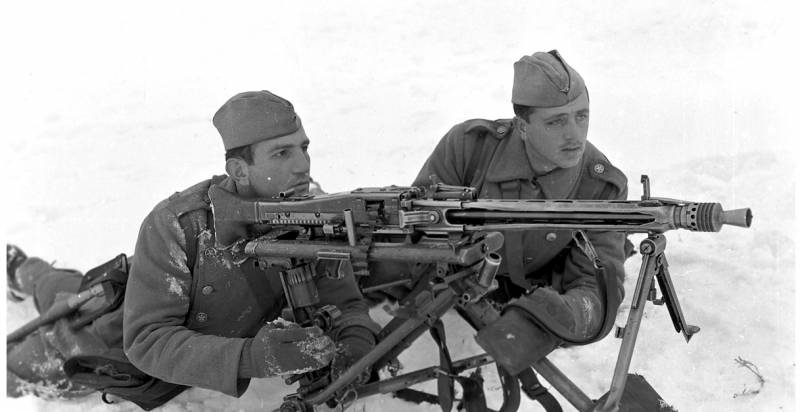
Yugoslav soldiers with a machine gun Zastava M53
Since the machine gun was created without a license agreement, the Federal Republic of Germany filed a lawsuit against Yugoslavia for copyright infringement. The Yugoslavs claimed that the license was part of war reparations, in addition, the bolt and a number of other parts of the Yugoslav machine gun were somewhat different in design from the MG.42. As a result, the international court ruled in favor of Yugoslavia.
From 1954 to 1971, more than 50 Zastava M000 machine guns were produced, which, in addition to the JNA, were exported. In 53, an order was received from Greece for 1978 machine guns chambered for 5000x7,62 mm NATO. Since 51, the Kragujevac plant for the American market has been producing small-scale production of 2002-mm machine guns capable of firing only single shots.
In 1955, the restoration of its own armed forces began in Germany, and at first the Bundeswehr was equipped with rifles and machine guns of 7,92 mm caliber. However, in connection with the adoption by NATO of a single rifle-machine-gun cartridge measuring 7,62x51 mm, the question arose of standardizing small arms. In this regard, in 1958, under the designation MG.1, the MG.42 machine gun, adapted for the NATO cartridge, was adopted.
The release of the 7,62 mm MG.1 machine gun was arranged by Rheinmetall on the basis of documentation received from Grossfuss. Since the rate of production of new machine guns was low, the FRG had to buy several thousand MG.42s from other countries and convert these machine guns to a standard NATO cartridge, replacing the barrel and parts of the tape feed mechanism. The machine gun received an additional bolt lock and a new return spring, and it was also possible to increase the resource of the barrel. Such converted machine guns received the designation MG.2.
After some modernization of the MG.1 machine guns, the final version of the machine gun, known as the MG.1966, was launched into production in 3. Compared to the original MG.42, the updated version has become more technologically advanced, it has also been possible to increase reliability and slightly reduce weight. In total, 3 improvements were introduced into the MG.61 design. The high rate of fire of a weapon affects ammo. Although the former MG.42 is adapted for 7,62 mm NATO, the cartridges used by the Bundeswehr to eliminate delays in firing partially differ from the standard 7,62x51 mm: the bottom of the German cartridge cases is stronger in order to be guaranteed to withstand the increased loads that occur when the cartridge is pulled out of the belt , also strengthened the fastening of the bullet.
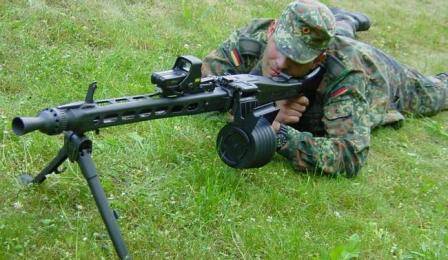
A Bundeswehr soldier with a 7,62 mm MG.3 machine gun
Depending on the modification and year of manufacture, the weight of the MG.3 is 10,6-11,5 kg. Length - 1225 mm. Barrel length - 565 mm. On the version used by the Bundeswehr, the rate of fire is within 1200 rds / min. In a number of armies of other states, machine guns with heavier bolts are used, which reduces the rate of fire to 800-900 rds / min. The MG.3 has the ability to use all three cartridge belts used in the armies of NATO countries: the German DM 1 and DM 13, as well as the American M13.
MG.3 machine guns were very widely exported and were officially adopted by more than 30 countries. In 2022, Ukraine received more than 500 machine guns from Italy and Germany. In addition to Germany, the release of MG.3 was carried out in Austria (under the designation MG 74), Greece, Iran, Italy (MG 42/59), Pakistan, Mexico, Sudan and Turkey.
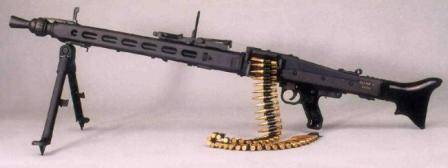
Pakistani-made MG.3 machine gun
The transition to the standard NATO cartridge and consistent modernization, which lasted until the beginning of the 21st century, allowed the direct descendant of the MG.42 to remain in service to this day. The latest modification of the MG.3 KWS (German Kampfwertsteigerung - increased combat effectiveness) was developed in 2013 by Rheinmetall and Tactics Group. This machine gun was considered as an intermediate option before the mass receipt of the new 7,62-mm MG.5 (HK121) by the troops.

Machine gun MG.3 KWS
The upgraded MG.3 KWS machine gun has improved ergonomics. Added foldable carrying handle, additional belt mounts, Picatinny rail for flashlights and laser/optical sights. The bipods are adjustable in length. An electronic weapon wear gauge is placed on the machine gun. Shock-absorbing stock with a shoulder stop. Installed switch with single fire function. The cartridge belt can be fed from both sides.
Despite attempts to modernize, the basic design of the machine gun, designed 80 years ago, is largely outdated and at present the MG.3 in the infantry units of the Bundeswehr is gradually being replaced by new models. At the level of the infantry squad, a lighter and more maneuverable, but also less powerful MG.4 machine gun of 5,56 mm caliber was adopted. In the company level, the MG.3 is supposed to be replaced by the MG.5 machine gun.
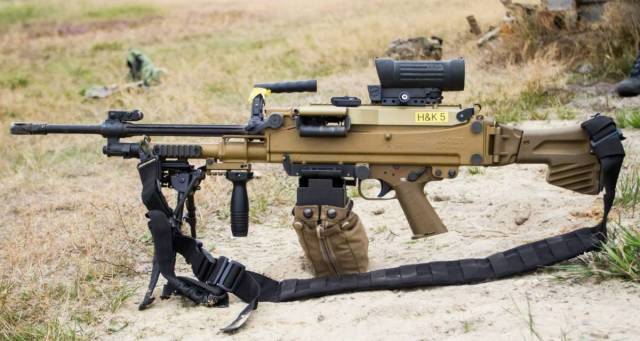
Machine gun MG.5
However, due to the fact that the new 7,62-mm MG.5 is not suitable for installation on previously released armored vehicles, MG.3 machine guns as part of the armament of combat vehicles will be used for a very long time.
Продолжение следует ...
Articles from this series:
Post-war use of pistols manufactured and developed in Nazi Germany
Post-war use of submachine guns produced in Nazi Germany
Post-war use of self-loading rifles and machine guns produced in Nazi Germany
Information